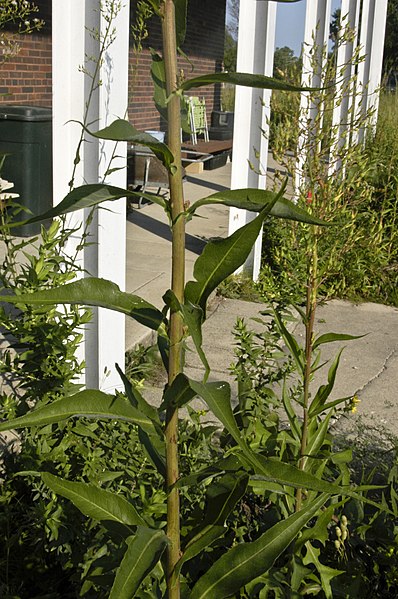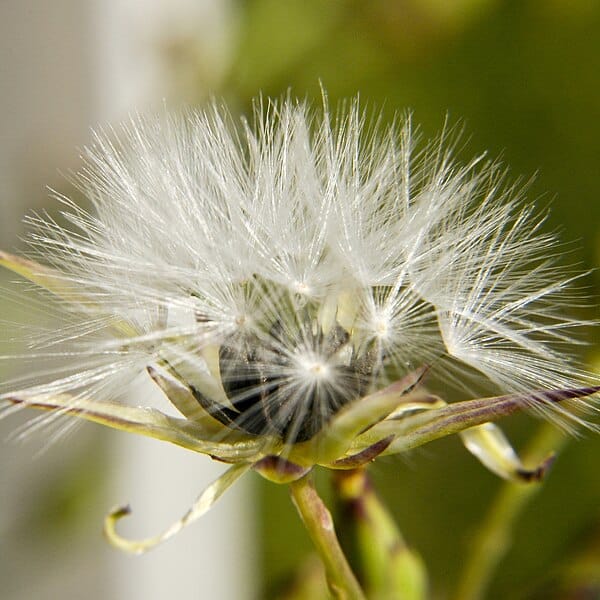Canada Lettuce Identification – Lactuca canadensis
Heads up
The Canada Lettuce, or Lactuca canadensis, is a part of the Asteraceae family (Aster family) which consists of a group of plants that includes daisies and sunflowers. Canada Lettuce is native to North America. Depending on conditions, the plant either completes its life in one year (annual) or two years (biennial).
Canada Lettuce: Key Parts in Photos




Where to find it
Canada Lettuce isn’t too picky about where it grows. You might spot it in areas with some shade or in full sun. Look around the edges of woods or along roadsides. With its height ranging from 4 to 10 feet, this tall plant can be easier to spot than you’d think.
How to identify Canada Lettuce
Standing tall and mostly unbranched, the stem of Canada Lettuce is smooth. Depending on the individual plant, it can be green, or have purple spots.
The leaves are varied. Near the base, they might be deeply cut or lobed, looking almost like separate pieces. As you move up, they get smaller, smoother, and often lack these deep cuts. Some can be broad, some narrow, and some might even have wavy edges. Though mostly hairless, you might find a few hairs running along the central vein underneath. These leaves mostly lack a stalk and might even seem like they’re hugging or clasping the stem.
The flowers are tiny blooms that might remind you of dandelions. A single Canada Lettuce plant can have a branching cluster of these flowers. Look closely, and you’ll see up to 20 rays or petals, which might have a few tiny teeth at their tip. Though yellow is their common hue, sometimes they could sport hints of red or orange. Around these petals, there are bracts. They’re usually green, sometimes with purple tips.
After blooming, these flowers transform into seed heads, which can be about an inch wide. The seeds, which are brown and flattened, have a long, thin beak. At the tip of this beak, there’s a tuft of white hairs. This isn’t just a fancy feature; these hairs help the seeds drift away with the wind.
